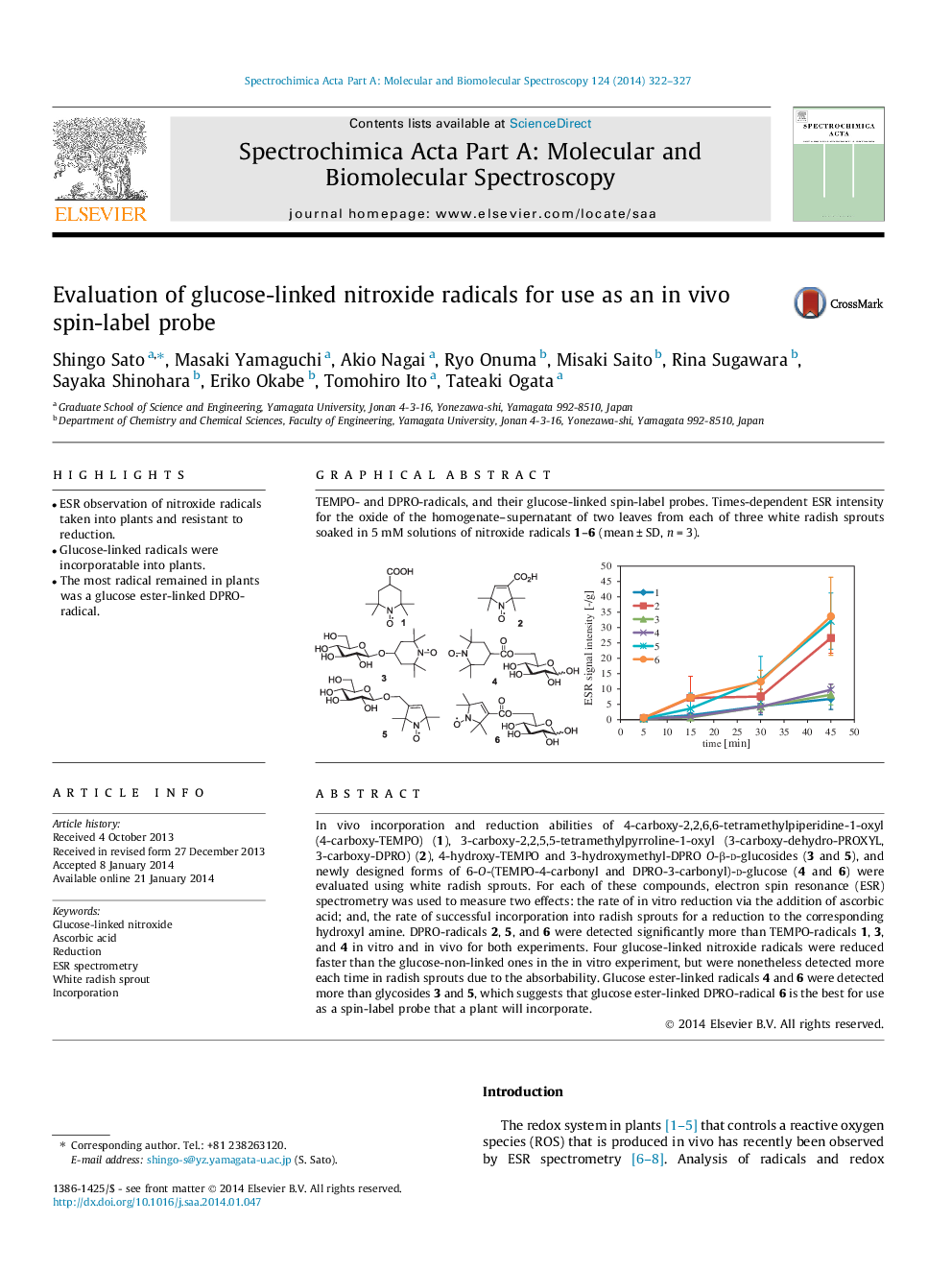| Article ID | Journal | Published Year | Pages | File Type |
|---|---|---|---|---|
| 1234299 | Spectrochimica Acta Part A: Molecular and Biomolecular Spectroscopy | 2014 | 6 Pages |
•ESR observation of nitroxide radicals taken into plants and resistant to reduction.•Glucose-linked radicals were incorporatable into plants.•The most radical remained in plants was a glucose ester-linked DPRO-radical.
In vivo incorporation and reduction abilities of 4-carboxy-2,2,6,6-tetramethylpiperidine-1-oxyl (4-carboxy-TEMPO) (1), 3-carboxy-2,2,5,5-tetramethylpyrroline-1-oxyl (3-carboxy-dehydro-PROXYL, 3-carboxy-DPRO) (2), 4-hydroxy-TEMPO and 3-hydroxymethyl-DPRO O-β-D-glucosides (3 and 5), and newly designed forms of 6-O-(TEMPO-4-carbonyl and DPRO-3-carbonyl)-D-glucose (4 and 6) were evaluated using white radish sprouts. For each of these compounds, electron spin resonance (ESR) spectrometry was used to measure two effects: the rate of in vitro reduction via the addition of ascorbic acid; and, the rate of successful incorporation into radish sprouts for a reduction to the corresponding hydroxyl amine. DPRO-radicals 2, 5, and 6 were detected significantly more than TEMPO-radicals 1, 3, and 4 in vitro and in vivo for both experiments. Four glucose-linked nitroxide radicals were reduced faster than the glucose-non-linked ones in the in vitro experiment, but were nonetheless detected more each time in radish sprouts due to the absorbability. Glucose ester-linked radicals 4 and 6 were detected more than glycosides 3 and 5, which suggests that glucose ester-linked DPRO-radical 6 is the best for use as a spin-label probe that a plant will incorporate.
Graphical abstractTEMPO- and DPRO-radicals, and their glucose-linked spin-label probes. Times-dependent ESR intensity for the oxide of the homogenate–supernatant of two leaves from each of three white radish sprouts soaked in 5 mM solutions of nitroxide radicals 1–6 (mean ± SD, n = 3).Figure optionsDownload full-size imageDownload as PowerPoint slide
